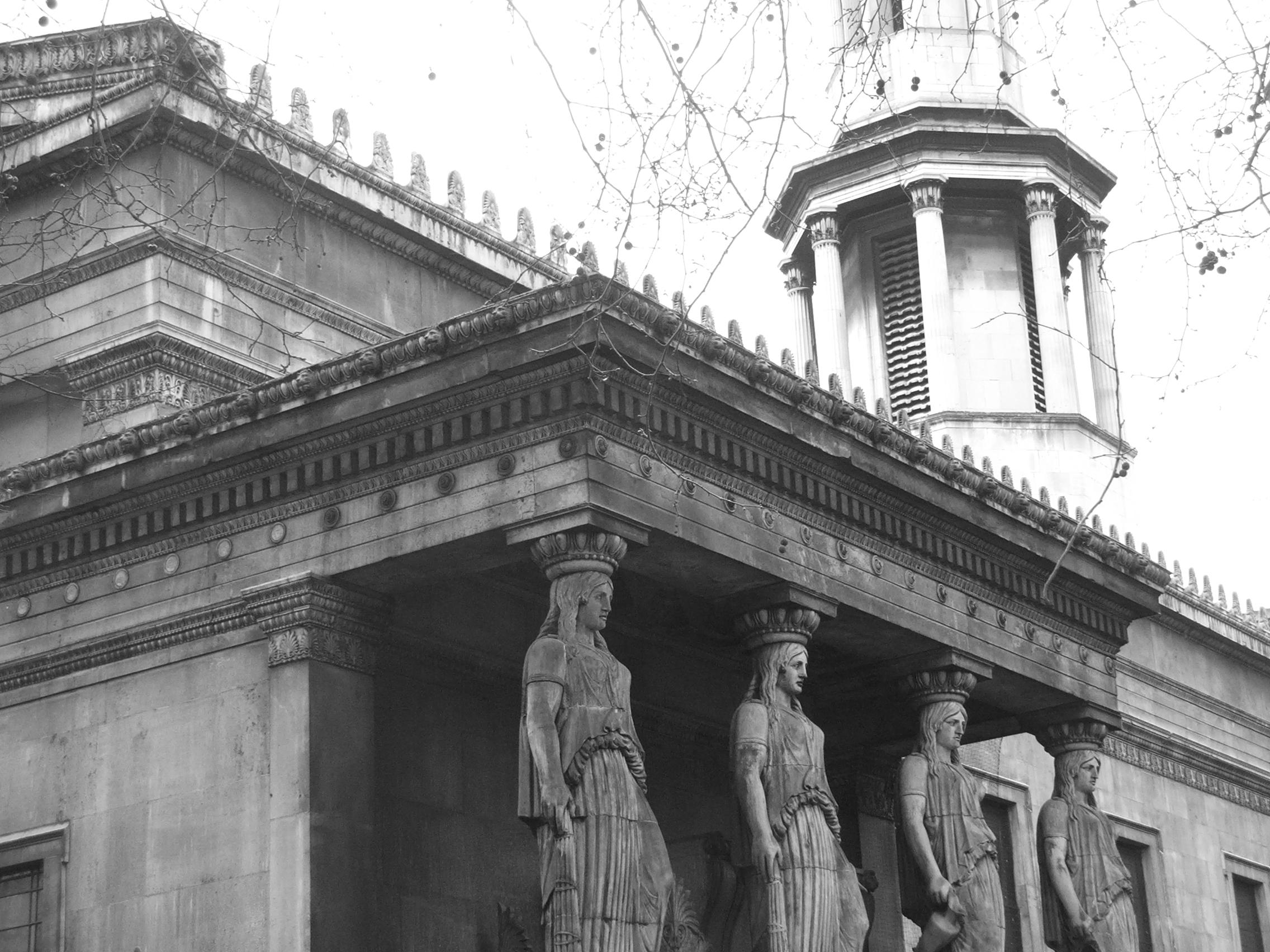Friends House
Euston, Greater London
The Friends House was built between 1924 - 1927 and incorporates a meeting room large enough for at least 1500 Quakers.

The church is an important early example of the Greek Revival architecture and it is mostly built from brick, faced with Portland stone.
Euston, Greater London
The portico and the tower are entirely of stone. All the external decoration, including the capitals of the columns, is of terracotta.
The ancient parish of St Pancras once stretched almost from Oxford Street to Highgate. By the early 1800s the original parish church had become neglected. The local population had declined, while the population in southern part of the parish had grown rapidly.
After a competition involving thirty or so tenders, designs by the local architect William Inwood were accepted. The first stone was laid by the Duke of York on 1 July 1819. It was carved with a Greek inscription, of which the English translation is ‘May the light of the blessed Gospel thus ever illuminate the dark temples of the Heathen’.
The total cost of the building, including land and furnishings, was £76,679, making it the most expensive church to be built in London since the rebuilding of St Paul’s Cathedral.
The Inwoods drew on two ancient Greek monuments for their inspiration, the Erechtheum and the Tower of the Winds, both on the Acropolis in Athens.
Henry William Inwood was in Athens at the time that the plans for St Pancras were accepted, and he brought back to England plaster casts of details of the Erechtheum, and some excavated fragments.
The pillars at the west end of the church are Ionic in style. The octagonal tower, modelled on the Tower of the Winds, also influences the shape of the domed central vestibule. The church’s most celebrated features are the two sets of caryatids that stand above the north and south entrances to the crypt. Unlike the original figures on the Acropolis, each of the St Pancras caryatids holds an extinguished torch or an empty jug, reflecting their position as guardians of the dead.
The caryatids are made of terracotta, constructed in sections around cast iron columns, and were modelled by John Charles Felix Rossi, who provided all the terracotta on the building.
The Crypt Gallery is a wonderfully atmospheric space which is regularly used for art exhibitions, performances, filming, book launches and many other activities. The church is open to visitors most days of the year and is regularly used for concerts and lectures as well as services.
Euston, Greater London
The Friends House was built between 1924 - 1927 and incorporates a meeting room large enough for at least 1500 Quakers.
Somers Town, Greater London
Designed by H and HW Inwood in a Gothic style, famously criticised by Pugin, and built between 1824 and 1827.
Kings Cross, Greater London
A recorded parish since the Norman Conquest, it is likely a church has stood on this site in some for since the mission of St Augustine to the Anglo Saxons.